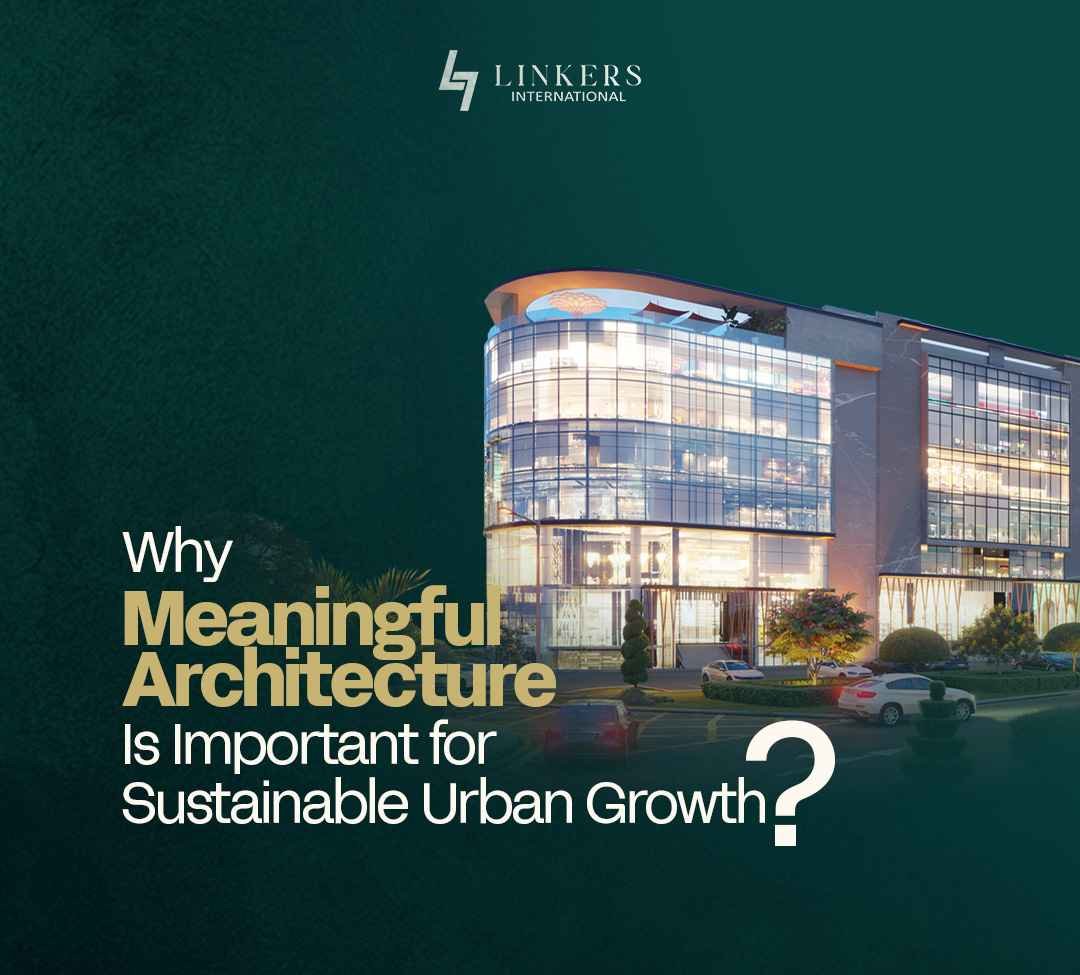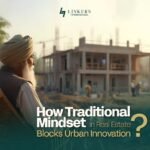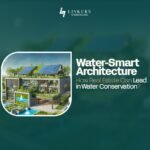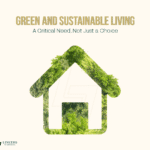In cities around the world, skylines rise and sprawl expands, but not all growth is created equal. Too often, urban development is driven by speed, profit, or aesthetics alone, resulting in buildings that look impressive but lack connection to people, place, or purpose.
But there’s a better way forward. By embracing meaningful architecture, cities can grow not just outward, but upward, in resilience, community, and sustainability.
Designing Architecture with Purpose, Not Just Style
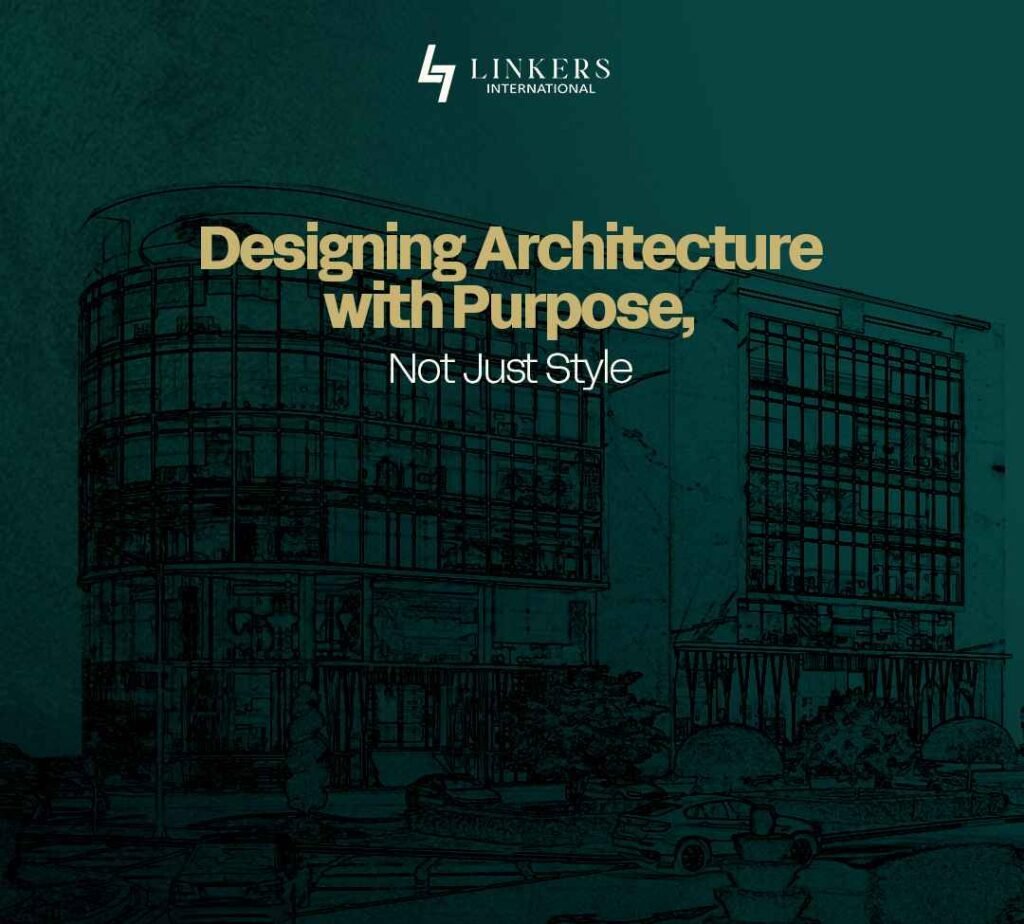
When architects and planners think holistically, they create buildings that remain relevant, resilient, and resource-efficient over time. Meaningful architecture takes into account how buildings function over decades: how they age, how they use energy, how they serve communities. This could mean;
Passive Cooling & Ventilation: Buildings oriented and ventilated to take advantage of natural airflow, reducing the need for mechanical air conditioning.
Natural Lighting: Maximizing daylight through skylights, light shelves, and strategic window placement to cut down on artificial lighting and energy use.
Green Roofs & Living Walls: Roof gardens and planted facades that reduce urban heat, improve insulation, and enhance biodiversity.
Thermal Mass Materials: Use of stone, rammed earth, or concrete to stabilize indoor temperatures by absorbing and slowly releasing heat.
Biophilic Design: Incorporating natural elements, plants, water, wood, daylight, to reduce stress and improve well-being.
Noise and Air Quality Consideration: Designing with acoustic buffers and air filtration systems to enhance comfort in dense urban settings.
Local, Low-Carbon Materials: Use of bamboo, adobe, or locally sourced stone to reduce transport emissions and support local economies.
Permeable Surfaces & Urban Drainage: Designing walkways and courtyards with materials that allow rain to soak into the ground, reducing flooding.
Culturally Resonant Design: Reflecting local identity through patterns, colors, and architectural styles that connect with heritage.
Real-World Examples of Purposeful Urban Architecture
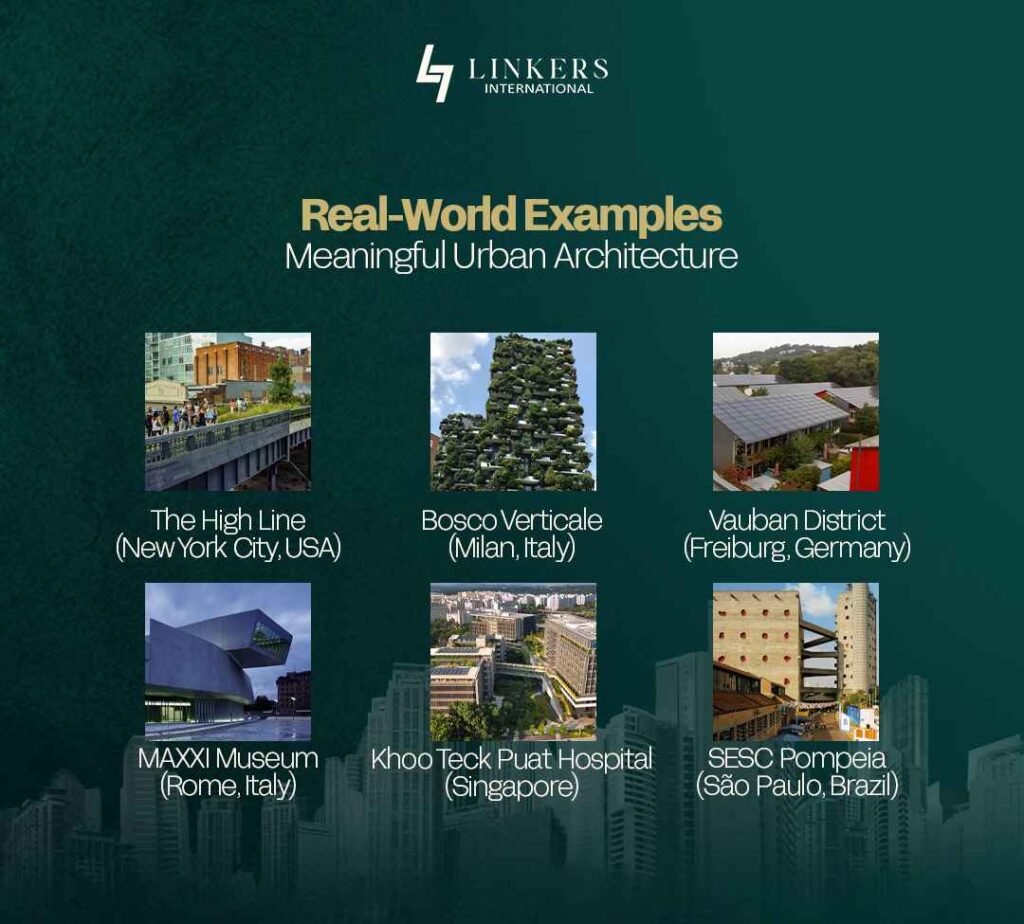
Urban growth should improve lives, not just the landscape. In walkable neighborhoods where public spaces are thoughtfully designed, people are more likely to connect, support local businesses, and engage in civic life. Here are some real-world examples of meaningful architecture.
The High Line (New York City, USA): An elevated park that transformed abandoned infrastructure into vibrant public space and community revitalization.
Bosco Verticale (Milan, Italy): Residential towers that integrate vertical forests to merge urban living with environmental sustainability.
Aga Khan Museum & Ismaili Centre (Toronto, Canada): A cultural complex fostering interfaith dialogue through architecture that bridges tradition and modernity.
Vauban District (Freiburg, Germany): A sustainable neighborhood designed around car-free living, renewable energy, and community-led planning.
MAXXI Museum (Rome, Italy): A bold contemporary museum blending innovation with Rome’s historic fabric to redefine cultural space.
Khoo Teck Puat Hospital (Singapore): A hospital designed as a healing environment, integrating greenery and community access into healthcare.
SESC Pompeia (São Paulo, Brazil): A former factory turned into a cultural hub that celebrates adaptive reuse and inclusive, community-centered design.
A Pakistani Perspective on Sustainable Architecture
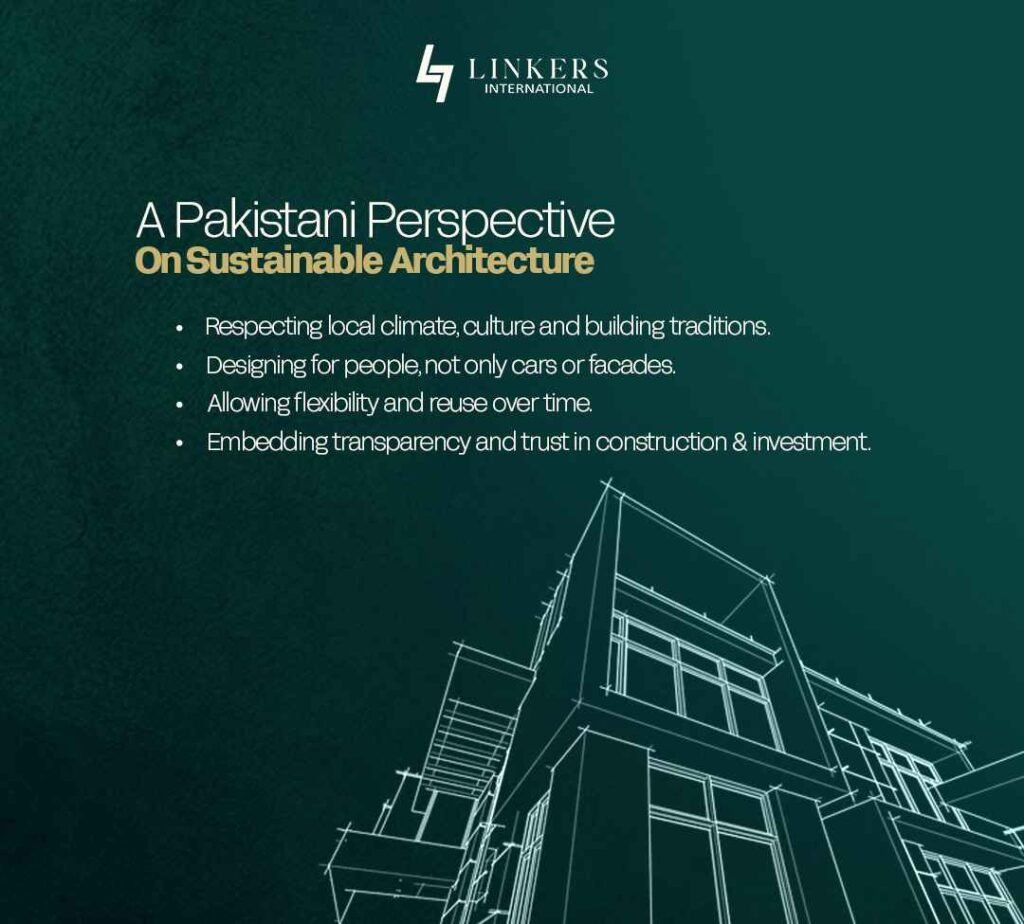
In Pakistan, cities such as Islamabad and Rawalpindi are growing rapidly. With this rapid growth comes both opportunity and challenge. How to ensure that architecture and urban development are meaningful: responsive to culture, community, environment, and long‑term value, rather than merely decorative or speculative. Meaningful architecture in the Pakistani setting means:
- Respecting local climate, culture and building traditions
- Designing for people, not only cars or facades
- Allowing flexibility and reuse over time
- Embedding transparency and trust in construction & investment
How Linkers International is Developing Meaningful Architecture that Matters for Urban Growth

When a developer like Linkers International integrates location, user‑centered design, transparency, and quality construction, the result can be more than a building, it contributes to sustainable urban growth. Let’s look at how Linkers International is attempting to align with these meaningful‑architecture principles through their projects:
Modern Design with Functional Quality
The architectural features for Linkers International projects like Pearl Business Center, include double‑glazed glass elevations (for energy efficiency), drive‑thru convenience in a commercial complex (first in the area) and smart access/parking. These features suggest the company goes beyond a mere attractive veneer; they are considering function, environment, and user experience.
Enhancing Community Value
Well-placed commercial projects by Linkers International in evolving urban zones help raise standards rather than simply speculating on profit. Linkers encourage mixed‑use spaces (shops, offices) that reduce travel and encourage vibrant urban life.
Location & Accessibility
Their project 27 Arclink in DHA Phase 1, Islamabad, is designed with a three‑sided open building layout, high visibility and strategic positioning near major roads and residential areas. By placing development in a context where people live and commute (rather than off in a detached zone), Linkers International is linking architecture and urban life meaningfully.
Some Considerations for Further Strengthening Architecture

Sustainability isn’t just about solar panels or LEED certifications, though those matter. It’s also about long-term thinking. Meaningful architecture resists the disposable mentality that often plagues urban development. For even deeper, meaningful architecture in Pakistan, the following elements could be emphasised:
- Local materials and climate‑responsive design (passive cooling, natural ventilation) to reduce energy use and adapt to Pakistan’s climate demand.
- Public/open spaces and community integration; not only commercial buildings, but the spaces between them matter.
- Adaptive reuse as cities evolve, so new developments anticipate future changes rather than being static.
- Cultural/contextual architecture, embedding local architectural identity, heritage, craft, not just international glass façades.
A Future Built with Intention
Meaningful architecture is not a luxury or an afterthought; it’s a strategy for shaping better cities. It asks us to slow down, to look deeper, and to design not just for today’s skyline, but for tomorrow’s citizens. Because when buildings are rooted in purpose, designed with empathy, and connected to place, they do more than fill cities.


